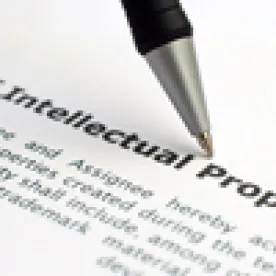We have previously written about disputes over prior art used in an AIA patent trial. A recent case presented challenges to materials obtained from the Internet. The case, Johns Manville Corp. v. Knauf Insulation, Inc.,[1] involved a petitioner’s reliance on exhibits downloaded from the Wayback Machine as prior art. In its final written decision, the PTAB determined that Wayback Machine exhibits were sufficiently authenticated and reliable to withstand a motion to exclude. However, the Board’s ruling did not specifically address one aspect of the challenge relating to a party, Alexa Internet, which initially captured the Internet pages that were archived.
Key Takeaway: The PTAB and the courts have previously accepted evidence from the Wayback Machine as long as there was supporting testimony to authenticate the materials. While this latest ruling continues that trend, it also leaves open the question of challenging Wayback Machine materials based on the involvement of Alexa in the archiving process. Petitioners relying on Wayback exhibits should at least be aware that such a challenge may be made, and may want to consider developing further evidence to support authenticity or reliability of dates. When presented with Wayback Machine evidence, Patent Owners may want to raise an objection to such materials based on lack of authenticating evidence relating to Alexa’s involvement and develop evidence tending to show that the materials are not reliable copies of pages available on the indicated dates.
Background: The Wayback Machine is a digital repository of archived web pages maintained by the Internet Archive, a non-profit organization.[2] Pages are saved using software programs known as web crawlers. The web crawlers automatically surf the Internet and store copies of web pages visited by the crawlers. Along with html and other data obtained from the web page, the URL of the page captured and the date/time of capture are also saved. Visitors can search the Wayback Machine archive by URL, and may be able to select pages based upon dates that pages were archived. The Wayback Machine assigns a unique URL to each archived page which includes the date and time of capture along with the original URL.
Case Facts: Johns Manville filed an IPR petition challenging Knauf’s design patent no. D631,670 (’670 patent), which relates to a design for mineral fiber insulation. Petitioner’s challenge included several exhibits that were copies of materials allegedly published on the Internet prior to the filing date of the ’670 Patent. Petitioner obtained the copies from the Wayback Machine, and included a declaration from a fact witness – an employee of Petitioner’s law firm – who had located and downloaded the exhibits from the Wayback Machine. The law firm declaration asserted that the Wayback Machine exhibits were captured by Alexa Internet and donated to the Internet Archive organization. The Board instituted trial on multiple grounds, including several obviousness grounds based on some of the Wayback Machine references.
In its merits response, Patent Owner contended that there was insufficient evidence to prove that the Wayback Machine references were publicly available. Patent Owner filed objections to the Wayback Machine exhibits for lack of authentication, and also as hearsay (e.g., as to dates shown on the exhibits), and objected to the law firm declaration as lacking personal knowledge regarding archival of the Wayback Machine exhibits. Petitioner, in reply, asserted that substantial evidence established public availability of the Wayback Machine references, including witness testimony. With its reply, Petitioner also filed a witness affidavit from a representative of the Internet Archive. The Internet Archive affidavit, essentially a form affidavit, provided information about the Wayback Machine and the form of the URL assigned to archived pages, and was accompanied by copies of web pages from the Wayback Machine – the same web pages as originally submitted with the petition. Of note, the Internet Archive affidavit was silent regarding Alexa Internet or its role in archiving the pages.
After Petitioner’s reply, Patent Owner obtained the Board’s permission to take a third-party deposition of the Internet Archive witness and then file a sur-reply – both highly unusual occurrences. In deposition, the Internet Archive witness described the relationship between Alexa Internet and Internet Archive, and confirmed that the subject Wayback Machine exhibits were captured by crawlers operated by Alexa and donated to Internet Archive.[3] The witness also explained that Alexa Internet was co-founded along with Internet Archive, and that Alexa was the original source of archives for the Wayback Machine and the main source of archives prior to 2009.
Patent Owner moved to exclude the Wayback Machine exhibits and the supporting witness testimony. With respect to the witnesses, Patent Owner asserted that their testimony as it related to the Wayback Machine exhibits was based on hearsay and not based on personal knowledge. Patent Owner also argued that the exhibits were not authenticated because the witnesses lacked personal knowledge to authenticate, and contained hearsay as to any date information in the document or URL.
Final Written Decision and Disposition of Patent Owner’s Motion to Exclude: As is typical in a final written decision, the PTAB addressed only those issues from the motion to exclude that were necessary to the ruling. But the decision also contained extensive discussion of how to construe the claimed design, which impacted some of the objections as well as the merits of the dispute. Considering the patent claim, figure (as supplemented with a color photograph) and prosecution history, the PTAB determined that the claimed design depicts insulation material “having a cloud-like appearance with variations in a swirl pattern,” and includes colors that convey a “variation of distinct hues including brown and cream.”[4]
As interpreted, the details of the claimed design figured heavily in the Board’s analysis of the asserted unpatentability grounds. Under the ordinary observer test, the Board ruled that a reference displaying a “pink” fiberglass insulation product could not anticipate the claim because an ordinary observer would readily distinguish the color differences between the designs. Similarly, the Board ruled that Petitioner failed to establish that the patented design was obvious under any of the grounds instituted for trial because of the differences between the claimed design and the insulation products shown in the references.
Indeed, the differences were particularly significant for two of the Wayback Machine product information exhibits (Ex. nos. 1004 and 1008). Based on its analysis, the Board ruled that they did not qualify as primary references sufficient to support a determination of obviousness because, in each case, the insulation product as depicted in the reference did not create an overall visual impression sufficiently similar to the patented design. In particular, the PTAB pointed out that the prior art photos displayed insulation from a distant perspective with variation in lighting, providing less detail and contrast than shown in the claimed design. Because the Board concluded that these two exhibits did not qualify as primary references, the Patent Owner’s objections as to these exhibits were rendered moot.[5]
As for two other Wayback Machine exhibits (copies of insulation product information pages, Ex. nos. 1005 and 1006), the PTAB rejected the Patent Owner’s attempt to exclude these exhibits and the supporting witness testimony, finding the evidence admissible. The Board accepted the testimony of the two witnesses as sufficient to establish the authenticity and public availability of the product information pages prior to the filing date of the patent, when considered in view of the contents of the materials. According to the Board, Patent Owner did not explicitly deny that the materials were publicly available, but merely contended that there was insufficient proof that the Wayback Machine exhibits were true copies of what was accessible at the time. But the Board reasoned that Patent Owner failed to point to any discrepancies between copies or reproductions of these product materials (which would call their authenticity into question), or to provide evidence that the dates printed on the pages or provided in the URL assigned by the Wayback Machine as the date of capture – and as reflected in the witness testimony – was not credible or trustworthy.[6]
The Board also rejected Patent Owner’s arguments that the URL and printed dates and witness testimony was hearsay, ruling that the testimony as to capture dates was consistent with the printed date on the pages themselves and all dates supported public availability of the materials prior to 2006. The Board further reasoned that the witness declaration/affidavit statements were not out-of-court statements but instead direct testimony in the case and thus not hearsay. Ultimately, the Board concluded that the exhibits were not hearsay or, alternatively, fell under hearsay exceptions for commercial publications or business records.[7]
Of note, however, the Board did not address in its final decision the fact that the Wayback Machine exhibits were initially captured by Alexa, later donated to Internet Archive and then included in the Wayback Machine database.[8]
Implications of Ruling as to Admissibility of Wayback Machine Exhibits: So what does this case mean for patent owners and challengers? The Board’s acceptance of the Wayback exhibits with the supporting witness testimony over the challenges to the exhibits means that parties will likely be able to rely on materials obtained from the Wayback Machine, so long as Wayback materials are accompanied at least by a witness declaration or affidavit, such as the affidavit that the Internet Archive makes available. Given the Board’s critique of the Patent Owner’s arguments against admissibility, this may signal that the Board will shift the burden of persuasion to parties opposing introduction of Wayback Machine exhibits, who may be well advised to point to some type of evidence tending to call into question the authenticity or reliability of the materials.
However, the question regarding the role of Alexa Internet in the archival process remains a possible issue for challenging Wayback exhibits. Since the PTAB did not specifically comment on Alexa, it remains (in theory) an unresolved issue. But if the Board does shift the burden of persuasion on Wayback Machine evidence, a successful challenge in the future to Wayback materials based on Alexa may require showing how the involvement of Alexa creates doubt as to the authenticity of the archived materials, as to the date the materials were captured, or otherwise as to the credibility of facts surrounding the archival process.
[1] Johns Manville Corp. v. Knauf Insulation, Inc., IPR2015-01453, paper 49 (PTAB Jan. 11, 2017).
[2] See generally the Internet Archive’s web site: www.archive.org.
[3] One of the exhibits was actually captured and donated by another third party, but this did not figure in the parties’ arguments or the Board’s decision.
[4] Johns Manville v. Knauf, paper 49 at 21, 25.
[5] Id. at 11-12.
[6] Id. at 13-16.
[7] Id. at 14-15.
[8] Objections to the remaining two Wayback Machine exhibits (Ex. nos. 1009 & 1010) were dismissed as moot because they were not part of any grounds instituted for trial. Id. at 16.




 />i
/>i

